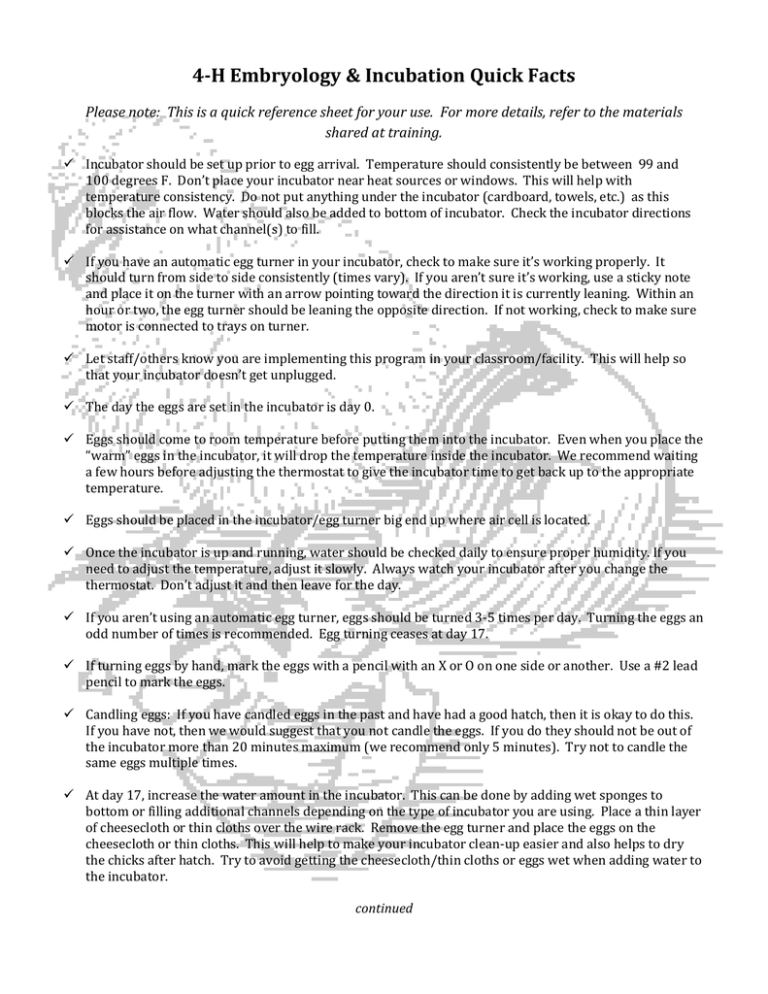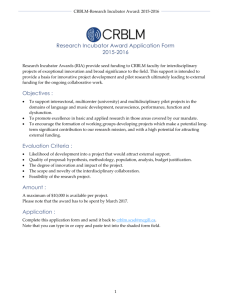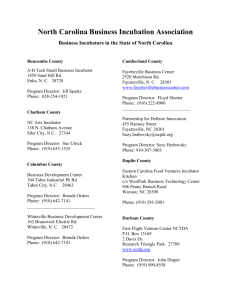Embryology Quick Facts
advertisement

4-H Embryology & Incubation Quick Facts Please note: This is a quick reference sheet for your use. For more details, refer to the materials shared at training. Incubator should be set up prior to egg arrival. Temperature should consistently be between 99 and 100 degrees F. Don’t place your incubator near heat sources or windows. This will help with temperature consistency. Do not put anything under the incubator (cardboard, towels, etc.) as this blocks the air flow. Water should also be added to bottom of incubator. Check the incubator directions for assistance on what channel(s) to fill. If you have an automatic egg turner in your incubator, check to make sure it’s working properly. It should turn from side to side consistently (times vary). If you aren’t sure it’s working, use a sticky note and place it on the turner with an arrow pointing toward the direction it is currently leaning. Within an hour or two, the egg turner should be leaning the opposite direction. If not working, check to make sure motor is connected to trays on turner. Let staff/others know you are implementing this program in your classroom/facility. This will help so that your incubator doesn’t get unplugged. The day the eggs are set in the incubator is day 0. Eggs should come to room temperature before putting them into the incubator. Even when you place the “warm” eggs in the incubator, it will drop the temperature inside the incubator. We recommend waiting a few hours before adjusting the thermostat to give the incubator time to get back up to the appropriate temperature. Eggs should be placed in the incubator/egg turner big end up where air cell is located. Once the incubator is up and running, water should be checked daily to ensure proper humidity. If you need to adjust the temperature, adjust it slowly. Always watch your incubator after you change the thermostat. Don’t adjust it and then leave for the day. If you aren’t using an automatic egg turner, eggs should be turned 3-5 times per day. Turning the eggs an odd number of times is recommended. Egg turning ceases at day 17. If turning eggs by hand, mark the eggs with a pencil with an X or O on one side or another. Use a #2 lead pencil to mark the eggs. Candling eggs: If you have candled eggs in the past and have had a good hatch, then it is okay to do this. If you have not, then we would suggest that you not candle the eggs. If you do they should not be out of the incubator more than 20 minutes maximum (we recommend only 5 minutes). Try not to candle the same eggs multiple times. At day 17, increase the water amount in the incubator. This can be done by adding wet sponges to bottom or filling additional channels depending on the type of incubator you are using. Place a thin layer of cheesecloth or thin cloths over the wire rack. Remove the egg turner and place the eggs on the cheesecloth or thin cloths. This will help to make your incubator clean-up easier and also helps to dry the chicks after hatch. Try to avoid getting the cheesecloth/thin cloths or eggs wet when adding water to the incubator. continued By day 17, you should also have your brooder box prepared for the hatch. Be sure your brooder box includes a heat source, bedding, food and water. It may be helpful to put marbles or stones in water container… this will help keep the chicks from drowning. When you see the first pip on an egg, pull the plugs on your incubator. In most cases, these are the red plugs on the top of the incubator. By pulling the plugs, you are increasing the oxygen in your incubator. Once the chicks have hatched, lower the temperature of the incubator to 95⁰F. Chicks should be removed from the incubator and placed in the brooder box after they are cute, dry and fluffy. Chicks take the remaining yolk sac into their abdomen right before they hatch, so they have food and water inside of them, enough for a day or better if left in the incubator. Once in the brooder, it may be helpful to gently dip their beaks in the water container. Whenever handling eggs or chicks, wash hands with soap and water (before and after). Do not use disinfectant wipes or hand gels. Washing hands will help keep youth and chicks healthy. Generally, if a chick is too weak to pip out of its shell, it is not strong enough to survive. You can “help” chicks out of their shells, but don’t expect success. University of Illinois • U.S. Department of Agriculture • Local Extension Councils Cooperating University of Illinois Extension provides equal opportunities in programs and employment. The 4-H Name and Emblem are Protected Under 18 U.S.C. 707.




